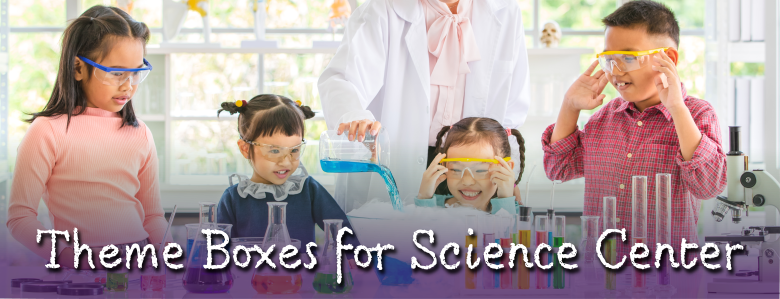
Building Theme Boxes for the Early Childhood Science Center
Building a motivating science center can take time and effort. Materials need to be changed out to maintain interest and keep it fresh. Often science themes may be related to current learning themes or season. One thing I use in my classroom is themes unit boxes. I have created science boxes with sciences questions or experiments to rotate use for a couple weeks at a time.
How it started: Our school PTA once generously donated $200.00 per grade level for science materials. We chose to purchase two scrapbooking container sets that hold 6 boxes and science materials. In each box, I used an experiement question or concept theme with materials. I used Lessonpix.com to help create directions, visuals, and work mats to be used with each theme.
How it works: Our team of 3 teachers share the boxes. We keep the stack of boxes in a storage room. Each of us selects one box for our science center, sets as a display, and changes it every 2-3 weeks.

Examples of Science Boxes
Here are some sample boxes and materials....
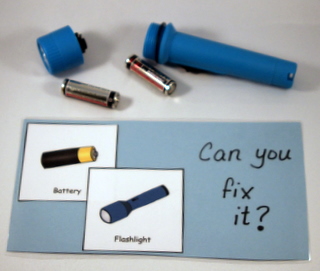 Can you fix it?
Can you fix it?
Students assemble pieces together to make a flashlight.
Materials: Flashlight, batteries, instructions
Variation: Start with the flashlight assembled, but the batteries in wrong. See if the students can figure how to fix it.
Variation: Have students assemble other items such as a pen or hand-held fan.
Does it Roll or Slide down a ramp?
Students place various objects at the top of a ramp and observe if and how the object moves down the ramp.
Materials: Ramp and an Assortment of small objects.
Ramp: Use a piece of wood, tray, a long wooden block, etc. Prop one end of the ramp up. You can use books, a small chair, etc.
Examples of small objects: tennis ball, wooden cube, roll of tape, pom pom, rock, acorn, brillo sponge, battery, eraser, marker, jingle bell, etc.
Variation: Place different materials on the ramp such as wax paper, cloth, or bubble wrap. Observe to see if it changes the resuts.
Click here for Sample "Roll or Slide" Sorting Mat by Lessonpix.com
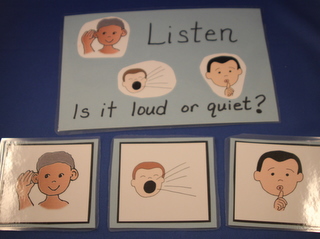 Does it make a sound?
Does it make a sound?
Students experiment with various objects and listen to hear they make a noise.
Materials: Assortment of objects. For example: keys, castanet, maraca, water in a bottle, plastic egg with rice inside, bubble wrap, bell, marbles, etc.
Variation: Put small objects in identicle containers. Make sure you cannot see inside the container. Seal the containers. Have students shake the containers and listen to the sound.
-
Have them compare different sounds using vocabulary (loud, softer, louder than, higher, lower, pitch, volume)
-
Make pairs of identicle containers. Have the students shake the containers to find matching sounds.
Variation: Have students remain in a gathering area. Have helpers stand in different locations, each holding an object that makes noise. Have the students identify where the sound came from.
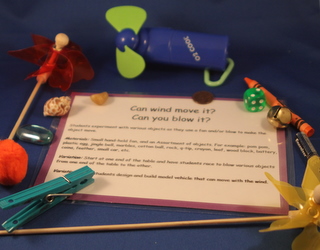 Can wind move it?
Can wind move it?
Students experiment with various objects as they use a fan and/or blow to make the object move.
Materials: Small hand-held fan, and an assortment of objects. For example: pom pom, plastic egg, jingle bell, marbles, cotton ball, rock, q-tip, crayon, leaf, wood block, battery, coins, feather, small car, etc.
Variation: Start at one end of the table and have students race to blow various objects from one end of the table to the other.
Variation: Have students design and build model vehicle that can move with the wind.
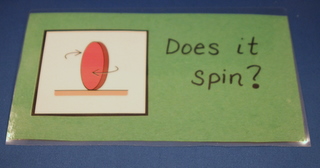 Does it Spin?
Does it Spin?
Students experiement as they spin various objects.
Materials: Assortment of small objects. For Example: tops, coin, small bottle (syrup bottle from Cracker Barrel works well), CD, jar lid, dice, plastic egg, button, etc.
Variation: Spin objects on various surfaces: sandpaper, cloth, white board, etc.
Variation: Observe / compare / relate to other things that spin in our world, such as wheels, bingo ball, air, water, the earth, etc. Introduce vocabulary such as axis, rotation, direction, tornado, etc.
Check out more science center ideas (click the picture):

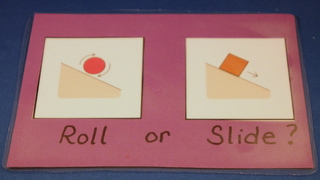
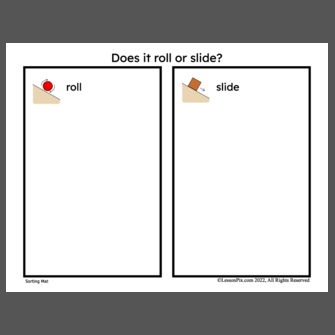
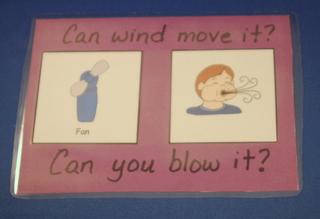
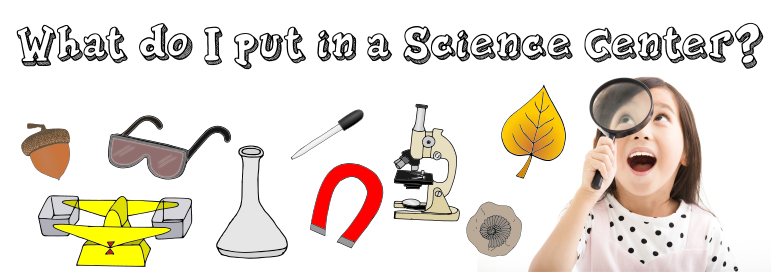
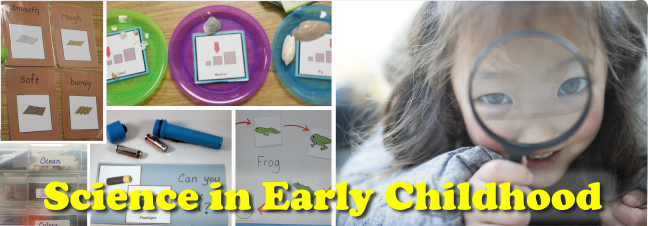
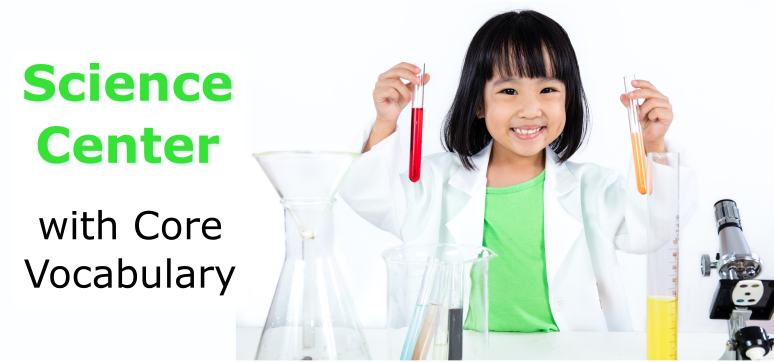
 Facebook
Facebook Twitter
Twitter Pinterest
Pinterest